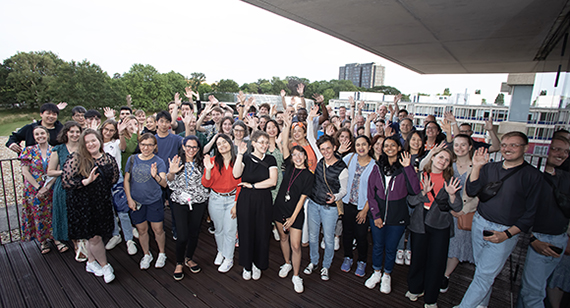Please note: This course will be taught in hybrid mode. Hybrid delivery of courses will include synchronous live sessions during which on campus and online students will be taught simultaneously.

Alessandra Gaia (Ph.D.) is Senior Research Fellow at the Centre for Longitudinal Studies of the UCL Social Research Institute. She is also Research Associate at the Institute for Social and Economic Research of the University of Essex. She is General Secretary of the European Survey Research Association, associate editor for Survey Research Methods and advisory editor for the journal Quality and Quantity: International Journal of Methodology. Her research interests are in the area of survey methodology and on methods for surveying hard-to-reach populations
Course Content
The course presents quantitative research methods to conduct research on rare, marginal, hidden, and elusive populations (also called hard-to-reach populations), such as, for example, sex workers, illegal immigrants, victims of trafficking, and drug users. After introducing and defining hard-to-reach populations, the course describes a wide range of methods: techniques to estimate the size of hard-to-reach populations (capture-recapture), sampling strategies (Respondent Driven Sampling, RDS), and data collection methods to ask questions about sensitive topics, including indirect questioning techniques (e.g. the Item Count Technique, the Randomised Response Technique, etc). Ethical issues arising when investigating hard-to-reach populations will be discussed. The course is applied in nature and includes examples from empirical research.
Course Objectives
The course is addressed to Ph.D. and Master students, academic researchers, and practitioners (from NGOs, UN, International Organizations, charities, and survey agencies), that wish to conduct research on hard-to-reach populations. Participants will learn how to sample and collect data on rare, marginal, hidden, elusive and excluded populations, in developing countries as well as in the western world. Also, students will become familiar with the ethical issues associated with conducting research in these contexts. Participants will be encouraged to present their work and the instructor will discuss case studies taking into consideration students’ areas of research interest.
Course Prerequisites
This is an introductory course. Basic knowledge in statistics and quantitative research methods would be beneficial.
Representative Background Reading
Kish, L. (1991). A Taxonomy of elusive populations. Journal of Official Statistics, 7(3): 339-347.
Tourangeau, R. (2014). “Defining hard-to-survey populations”. Hard-to-Survey Populations. Cambridge: Cambridge University Press. doi:10.1017/CBO9781139381635, p: 3-20.
Required texts – this text will be provided by ESS:
Tourangeau, R., Edwards, B., Johnson, T., Wolter, K., & Bates, N. (Eds.). (2014). Hard-to-Survey Populations. Cambridge: Cambridge University Press. doi:10.1017/CBO9781139381635
Background knowledge required
Maths
Calculus = elementary
Day 1: Introduction and key concepts. Measuring undercounts and estimating the size of hard-to-survey populations
Introduction: What are hard-to-survey populations? What are the challenges in studying rare, marginal, excluded, elusive, and hidden populations? What is social desirability bias and how does it affect data quality?
Estimating the size of hard-to-survey populations: the capture-recapture method.
Case study: Estimating the Prevalence of Male Clients of Prostitute Women in 2006 in Vancouver.
Day 1 reading list:
Tourangeau, R. (2014). “Defining hard-to-survey populations”, in Tourangeau, R., Edwards, B., Johnson, T. P., Wolter, K. M., & Bates, N. (eds.). Hard-to-survey populations. Cambridge University Press, pp. 3-20. DOI: https://doi.org/10.1017/CBO9781139381635.003
Roberts, John M. & D. D. Brewer. (2006). Estimating the Prevalence of Male Clients of Prostitute Women in Vancouver with a Simple Capture–recapture Method. Journal of the Royal Statistical Society, Series A. 169(4): 745–756.
Day 2: Sampling hard-to-survey populations
Sampling methods for hard to survey populations. Network-based sampling methods: snowball sampling and Respondent Driven Sampling (RDS).
Case study: Surveying migrant populations with respondent-driven sampling.
Day 2 reading list:
Heckathorn, D. D., & Cameron, C. J. (2017). Network sampling: From snowball and multiplicity to respondent-driven sampling. Annual review of sociology, 43, 101-119.
Mulry, M. H. (2014). “Measuring undercounts for hard-to-survey groups”, in Tourangeau, R., Edwards, B., Johnson, T. P., Wolter, K. M., & Bates, N. (eds.). Hard-to-survey populations. Cambridge University Press, pp. 37-57. DOI: https://doi.org/10.1017/CBO9781139381635.003
Lee, S., Wagner, J., Valliant, R., & Heeringa, S. (2014). “Recent developments of sampling hard-to-survey populations: an assessment”, in Tourangeau, R., Edwards, B., Johnson, T. P., Wolter, K. M., & Bates, N. (eds.) Hard-to-survey populations. Cambridge University Press, pp. 424-444. DOI: https://doi.org/10.1017/CBO9781139381635.003
Tyldum, G. 2020. Surveying migrant populations with respondent-driven sampling. Experiences from surveys of east-west migration in Europe, International Journal of Social Research Methodology, DOI: 10.1080/13645579.2020.1786239
Day 3: Data collection on hard-to-survey populations. Indirect questioning techniques (part 1)
Asking sensitive questions in surveys; mode and interviewer effects; privacy of the interview setting; forgiving introduction; direct versus indirect questioning techniques.
Indirect questioning techniques: The Randomised Response Technique; the nonrandomized response technique (NRRT); network scale-up technique (NST); the three card method.
Case study: mode effects and the sexual double standard.
Day 3 reading list:
Tourangeau, R., Rips, L. J., & Rasinski, K. (2000). The psychology of survey response. Cambridge University Press.
Day 4: Indirect questioning techniques (part 2)
The Item Count Technique(list experiments); the “two lists” version of the Item Count Technique; the Longitudinal Item Count Technique; the Person Count Technique; the Item Sum Technique.
Designing the Item Count Technique; analysing data from the Item Count Technique.
Case study: an application of the Item Count Technique to study drug consumption.
Day 4 reading list:
Gaia, A., (2020). “The Item Count Technique”, in P. A. Atkinson, A. Cernat, S. Delamont, J. W. Sakshaug, R. Williams (eds.), SAGE Research Methods Foundations. doi: 10.4135/9781526421036914388
Miguel García-Sánchez, Rosario Queirolo. 2020. A Tale of Two Countries: The Effectiveness of List Experiments to Measure Drug Consumption in Opposite Contexts, International Journal of Public Opinion Research, https://doi-org.proxy.unimib.it/10.1093/ijpor/edaa031
Day 5: Ethics and conclusion
The ethics of surveying hard-to-reach populations; data privacy and anonymisation; panel conditioning and the question behaviour effect. Summary and Q&A.
Day 5 reading list:
Fitzsimmons, G. J., & Moore, S. G. (2008). Should we ask our children about sex drugs and rock & roll? Potentially harmful effects of asking questions about risky behaviours. Journal of Consume Psychology, 18(2), 82–95.



